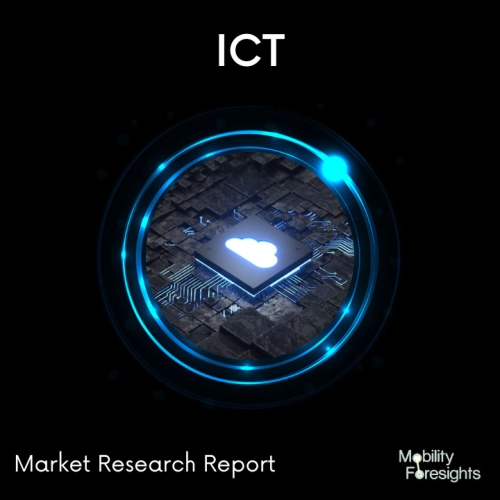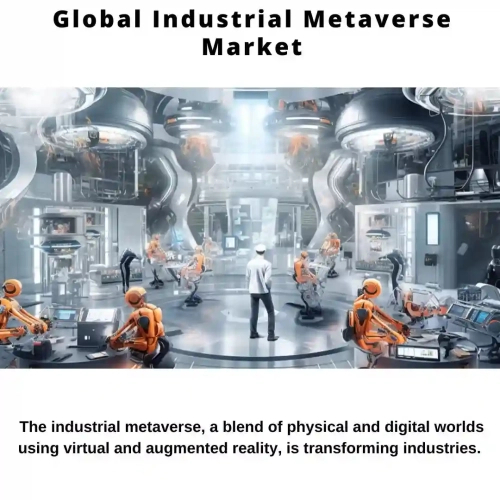
- Get in Touch with Us

Last Updated: Apr 25, 2025 | Study Period: 2024-2030
The Industrial Metaverse is a world, which is always on. Where real machines and factories, buildings and cities, grids and transportation systems are mirrored in the virtual world. Why is this so important? In a digital environment, problems can be found, analysed, and fixed quickly â or better yet, discovered before they arise. And all of this will happen in a world enabling a whole new level of collaboration. Where people can break the barriers of distance and work together across countries and continents as if they were together in the very same room, in front of the very same machines or objects.
Where everyone can try out new ideas easily and quickly â and where innovation takes off. The Metaverse is where virtual reality supports people who are working hands-on, on site. A virtual realm where we can travel into the past and even into the future to understand problems and processes better and find optimal solutions.

The Global industrial metaverse market accounted for $XX Billion in 2023 and is anticipated to reach $XX Billion by 2030, registering a CAGR of XX% from 2024 to 2030.
Siemens is also laying the groundwork for the industrial metaverse to improve production procedures. Siemens' digital twin technology has been assisting businesses to increase productivity, efficiency, and sustainability. By allowing the industrial metaverseâphotorealistic, physics-based digital twins that let people engage and work together to solve real-world problemsâSiemens is now pushing technology even further.
The integration of the Siemens Xcelerator and NVIDIA Omniverse platforms by Siemens and NVIDIA will enable manufacturing and product designers to develop digital twins that are fully functional and reflect full design accuracy.
One of the biggest automakers, BMW Group, is already creating digital twins to evaluate the design of its manufacturing facilities and increase productivity.BMW has no. of plants worldwide that make automobiles. BMW's global teams employ digital twins to work together in real time, in a single virtual space, to increase the productivity and efficiency of its plants. This enables them to design and plan the factories in 3D, and everyone can see the changes and updates right away in industrial metaverse. In simulations, digital people can also be utilised to try out new procedures for worker ergonomics.
| Launch Date | Company | Product/Service | Area of Focus | Description |
| April 12, 2024 | Siemens | Immersive Factory Planning Suite | Digital Twin & Simulation | This suite utilizes VR/AR technology to create digital twins of factories, allowing for virtual walkthroughs, simulation of production processes, and collaborative planning in an immersive environment. |
| March 15, 2024 | PTC | HoloWorks 2.0 | AR-powered Remote Assistance | This upgraded platform facilitates remote troubleshooting and maintenance tasks. Field technicians can use AR overlays to visualize instructions, receive live guidance from experts, and access relevant data about the equipment they're servicing. |
| February 07, 2024 | Microsoft | Mesh for Teams | Collaborative Workspaces | Mesh enables the creation of persistent, shared virtual workspaces within Microsoft Teams. Teams working on industrial projects can utilize this for collaborative design sessions, virtual meetings in 3D environments, and real-time progress monitoring. |
| January 18, 2024 | NVIDIA | Omniverse Enterprise | Industrial Metaverse Platform | This open-world platform provides a foundation for building industrial metaverse applications. It offers tools for creating digital twins, simulating physical systems, and facilitating collaboration across dispersed teams. |
| December 01, Dassault Systèmes | 3DEXPERIENCE Platform Metaverse | Integrated Metaverse Solution | Dassault Systèmes offers a comprehensive suite encompassing design, simulation, data analytics, and collaboration tools. This latest update integrates metaverse functionalities, enabling users to interact with 3DEXPERIENCE data in a virtual environment. |

| Sl no | Topic |
| 1 | Market Segmentation |
| 2 | Scope of the report |
| 3 | Abbreviations |
| 4 | Research Methodology |
| 5 | Executive Summary |
| 6 | Introduction |
| 7 | Insights from Industry stakeholders |
| 8 | Cost breakdown of Product by sub-components and average profit margin |
| 9 | Disruptive innovation in the Industry |
| 10 | Technology trends in the Industry |
| 11 | Consumer trends in the industry |
| 12 | Recent Production Milestones |
| 13 | Component Manufacturing in US, EU and China |
| 14 | COVID-19 impact on overall market |
| 15 | COVID-19 impact on Production of components |
| 16 | COVID-19 impact on Point of sale |
| 17 | Market Segmentation, Dynamics and Forecast by Geography, 2024-2030 |
| 18 | Market Segmentation, Dynamics and Forecast by Product Type, 2024-2030 |
| 19 | Market Segmentation, Dynamics and Forecast by Application, 2024-2030 |
| 20 | Market Segmentation, Dynamics and Forecast by End use, 2024-2030 |
| 21 | Product installation rate by OEM, 2022 |
| 22 | Incline/Decline in Average B-2-B selling price in past 5 years |
| 23 | Competition from substitute products |
| 24 | Gross margin and average profitability of suppliers |
| 25 | New product development in past 12 months |
| 26 | M&A in past 12 months |
| 27 | Growth strategy of leading players |
| 28 | Market share of vendors, 2022 |
| 29 | Company Profiles |
| 30 | Unmet needs and opportunity for new suppliers |
| 31 | Conclusion |
| 32 | Appendix |